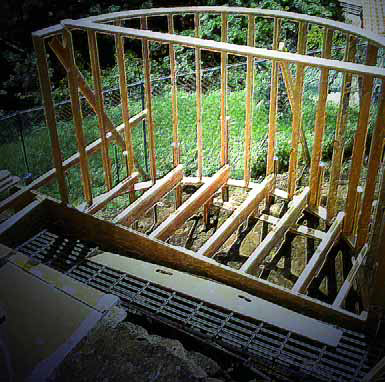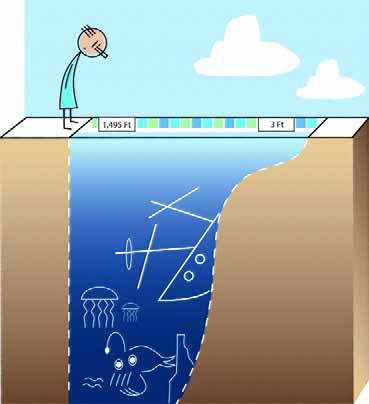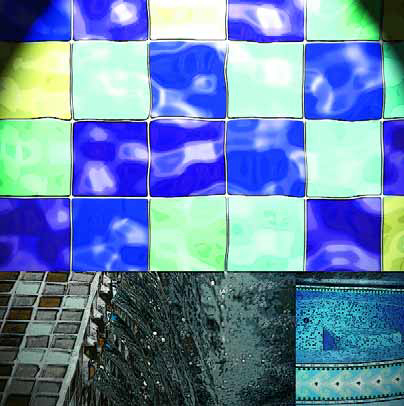details
Plagiarism. Copyright infringement. Theft of intellectual property. We hear and read about these crimes in the media all the time and don't think they'll ever affect us. But I can bear witness to the fact that we have people in our midst who seem to think that committing these crimes is no big deal. Setting aside any other criticism I've ever lain at the feet of the watershaping trades, if there's one intolerable problem the industry has, it's that there are people within it who are apparently willing to steal to get ahead. I'm not talking about job-site incidents where materials or tools mysteriously vanish. That's a real problem, but even more damaging in my eyes is the surprisingly common practice that some people have of representing the efforts of others as their own. In a phrase, I'm talking about
I want to clear up a misconception: Although the programs my colleagues and I stage through Genesis 3 are easily associated with the "high end" and the work of several people associated with our programs may be said to exist at the cutting edge of watershape design, it is simply untrue that we are promoting construction standards that somehow go above and beyond what the rank-and-file industry should be practicing. When we talk about watershape "design" and "construction," it's important to understand that although those two things go hand in hand, they are completely separate considerations. Design is what makes pools and spas either ordinary or extraordinary and is about materials selection, shape, color, elevations, lighting, water effects and location in a setting - basically a whole range of
One of the things I've referred to repeatedly through the years is my interest in quality forming for watershapes. I look at it this way: If the job is about creating quality reinforced-concrete structures, then precisely controlling their dimensions and contours stands at the very heart of the art and craft of watershaping. And all I'm recommending here is simply following the lead of the experts who install building foundations and structural walls by using completely rigid materials and support frameworks. To drive that point home, I want to discuss the forming of one specific detail - and define a right way of getting it done. One of my trademarks is the fact that I build many pools that are
One of the things I've referred to repeatedly through the years is my interest in quality forming for watershapes. I look at it this way: If the job is about creating quality reinforced-concrete structures, then precisely controlling their dimensions and contours stands at the very heart of the art and craft of watershaping. And all I'm recommending here is simply following the lead of the experts who install building foundations and structural walls by using completely rigid materials and support frameworks. To drive that point home, I want to discuss the forming of one specific detail - and define a right way of getting it done. One of my trademarks is the fact that I build many pools that are
A big part of properly designing watershapes to meet specific client needs has to do with understanding how they'll be using the body of water. I always explore this issue with my clients, which is why, for the most part, I don't do many pools with traditional deep ends - despite the fact that, for decades, most pools have been built with them. To me, in fact, the whole concept of deep water in residential swimming pools is basically misguided and largely obsolete. Consider exactly what it is that bathers can do in the deep end of a pool: They might dive, tread water or swim to the bottom to retrieve coins or pool toys - and, unfortunately, they can drown there, too. Yes, people also drown in shallow water, but there's no doubt that deeper waters provide
A big part of properly designing watershapes to meet specific client needs has to do with understanding how they'll be using the body of water. I always explore this issue with my clients, which is why, for the most part, I don't do many pools with traditional deep ends - despite the fact that, for decades, most pools have been built with them. To me, in fact, the whole concept of deep water in residential swimming pools is basically misguided and largely obsolete. Consider exactly what it is that bathers can do in the deep end of a pool: They might dive, tread water or swim to the bottom to retrieve coins or pool toys - and, unfortunately, they can drown there, too. Yes, people also drown in shallow water, but there's no doubt that deeper waters provide
I know I've quoted or paraphrased Ernest Hemingway on this point before, but it bears repeating once again: Anything that was ever any good, you pay for. I'd go so far to say I've based my entire business philosophy on that basic idea. For one thing, there's an essential truth to what he's saying. For another, I see its clear application to watershaping on a variety of levels - particularly when it comes to the materials we use in creating our "art." Indeed, a huge part of giving clients the unique elegance and beauty they so often crave involves understanding and appreciating


















